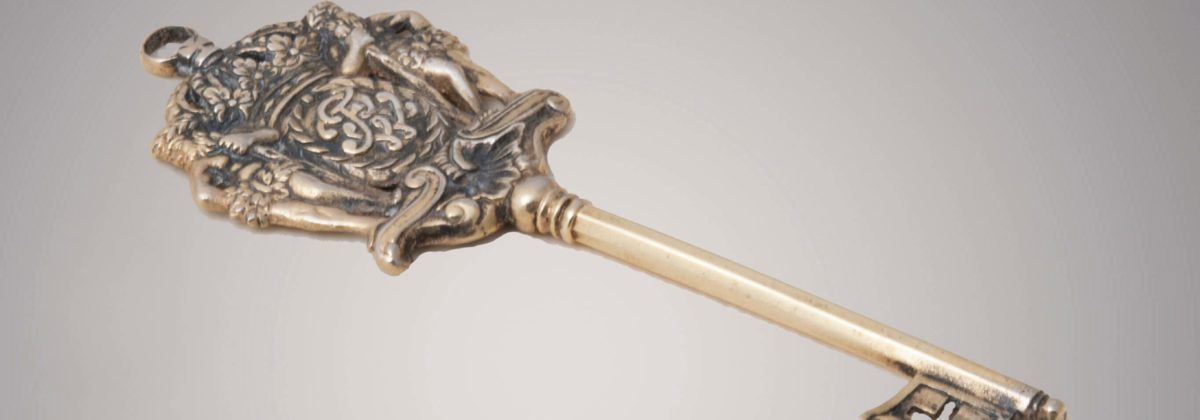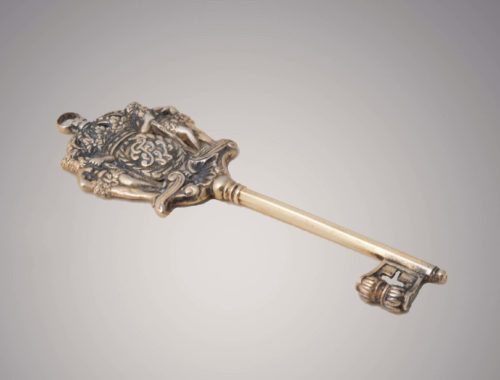Detailed information
Prussian Chamberlain Key, Silver gilt
The head of the present Prussian chamberlain silver-gilt key has the shape of an oval medallion with the initials “FWR” (Friedrich Wilhelm Rex most probably for Frederick Wilhelm III of Prussia) within laurel wreath. Above it stands a large crown, which has a cross as a knob. The medallion is flanked by two wild men. Both stand on two scrolls with a shell and look respectively towards the right and the left. The hexagonal shaft is stepped at the top and the full mandrel is decorated with a ball. The ridge is decorated with a cross incision and two bulges.
For an almost identical key, s. in the collections of the LWL-Museum für Kunst und Kultur, Münster, and for an earlier, very similar key, s. in the collections of the Historisches Museum Basel.
For more examples of chamberlain keys from the 18th and 19th centuries, s. Lecoq, 1973, t. LXXV.
The Chamberlain and the Chamberlain Key
The key has always been a symbol of property and power. The key of the chamberlain was a high-ranking sign of the dignity for such a person. This key was purely honorary in the 18th and 19th centuries. Chamberlain keys were worn together with the chamberlain’s uniform on a portepee. Such keys were usually decorated with the coat of arms and the monogram of the lord.
Chamberlains existed since the high Middle Ages. In courts there were usually four court offices: the marshal (stable master), the cup-bearer (supervisor of the drinks (wine) at the royal table), the chamberlain (treasurer) and the steward (head of the court table or majordomo). The chamberlain actually has the right and the possibility to open the chamber of his master. The chamberlain had lost his functions during the Baroque period but kept the title honorary.
Among the known chamberlains of the Prussian Court is Voltaire, who in 1750 accepted the position of Chamberlain in Sanssouci. The French philosopher kept this position until 1753. Frederick II and the French philosopher were connected by a close, rapturous relationship, which, however, was dramatically broken off.
Literature
Brückner, Uwe, „Ein herzoglich Nassauscher Kämmererschlüssel“, In: Ordensjournal, Ausgabe 10, Juli 2007, S. 1-13.
Lecoq, Raymond, Serrurerie ancienne : techniques et œuvres, Paris : Gedalge, 1973.
Von Freeden, Max H., „Alte Prunkschlüssel“, S. 7-8 In: Altfränkische Bilder und Wappenkalender, 64. Jahrgang, 1965.



